The 7 biggest mistakes to avoid when deciding where to put a TV in a living room
Get your TV placement right for enjoying screen time in comfort and to ensure your space looks great too
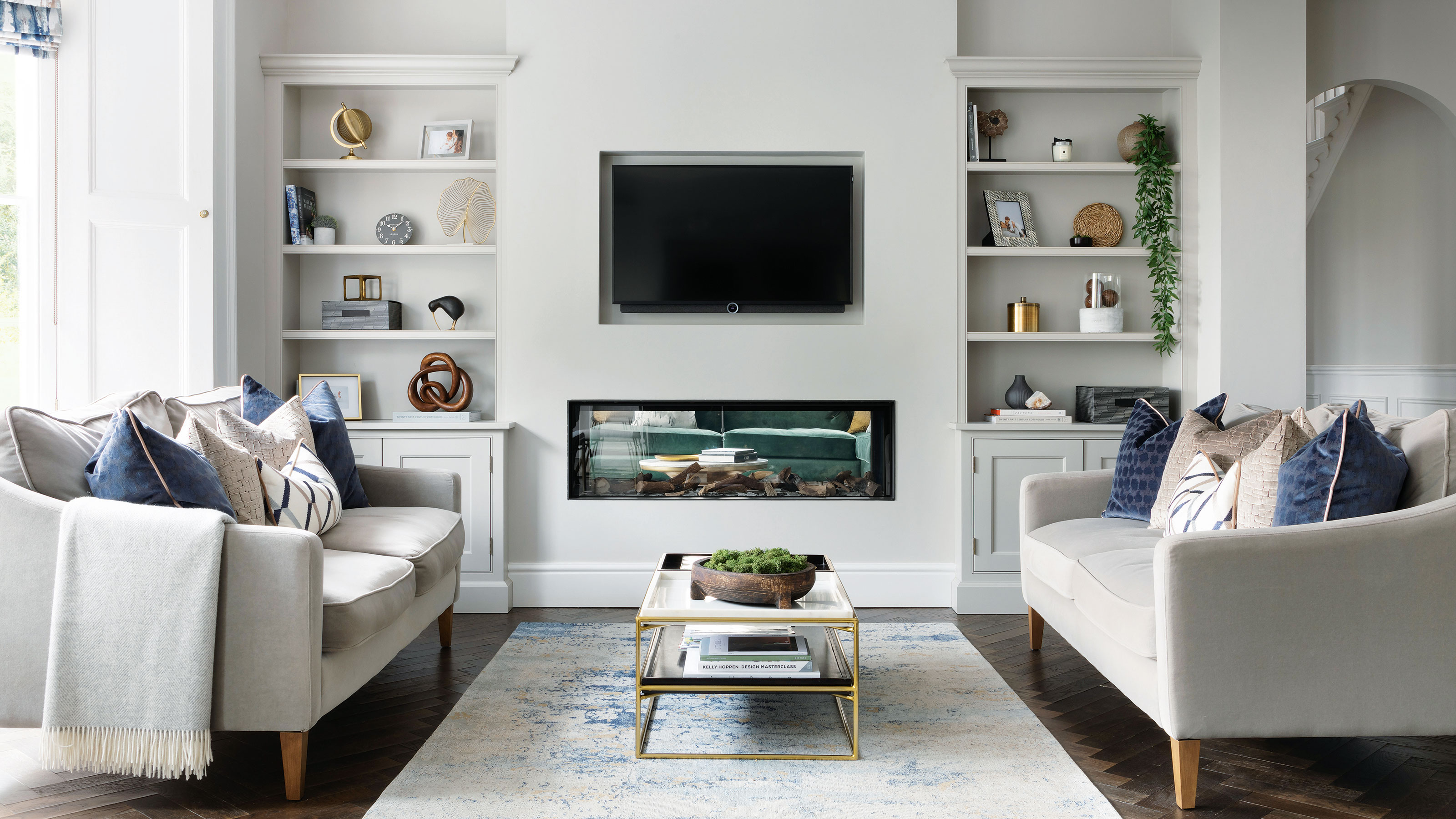

Let's face it, a TV isn't exactly the most attractive thing to have in your living room. Yes some designs are 'smart, sleek and sexy' but at the end of the day, they are still a large, black rectangle that can be tricky to seamlessly blend into a stylish interior.
Yet we all have them in our living rooms and admittedly relish an evening to sink into the sofa and catch up on our fav drama/series/reality show, so while we might baulk at their size, shape and colour (for the real biggies, can we suggest looking into how to hide a TV), it's important that we at least get their placement right, not only for an enjoyably showing, but to ensure a gorgeous living space too.
So here we've listed the biggest mistakes when deciding where to put a TV in a living room, plus the faux pas to avoid, to help make sure you don't make any of them!
1. Don't guess where the TV should be placed
One of the biggest living room mistakes when deciding where to put a TV, is guessing where it should go- whether on the wall or on a stand, it needs to be in a practical place, but also at a height that takes comfort into consideration too.
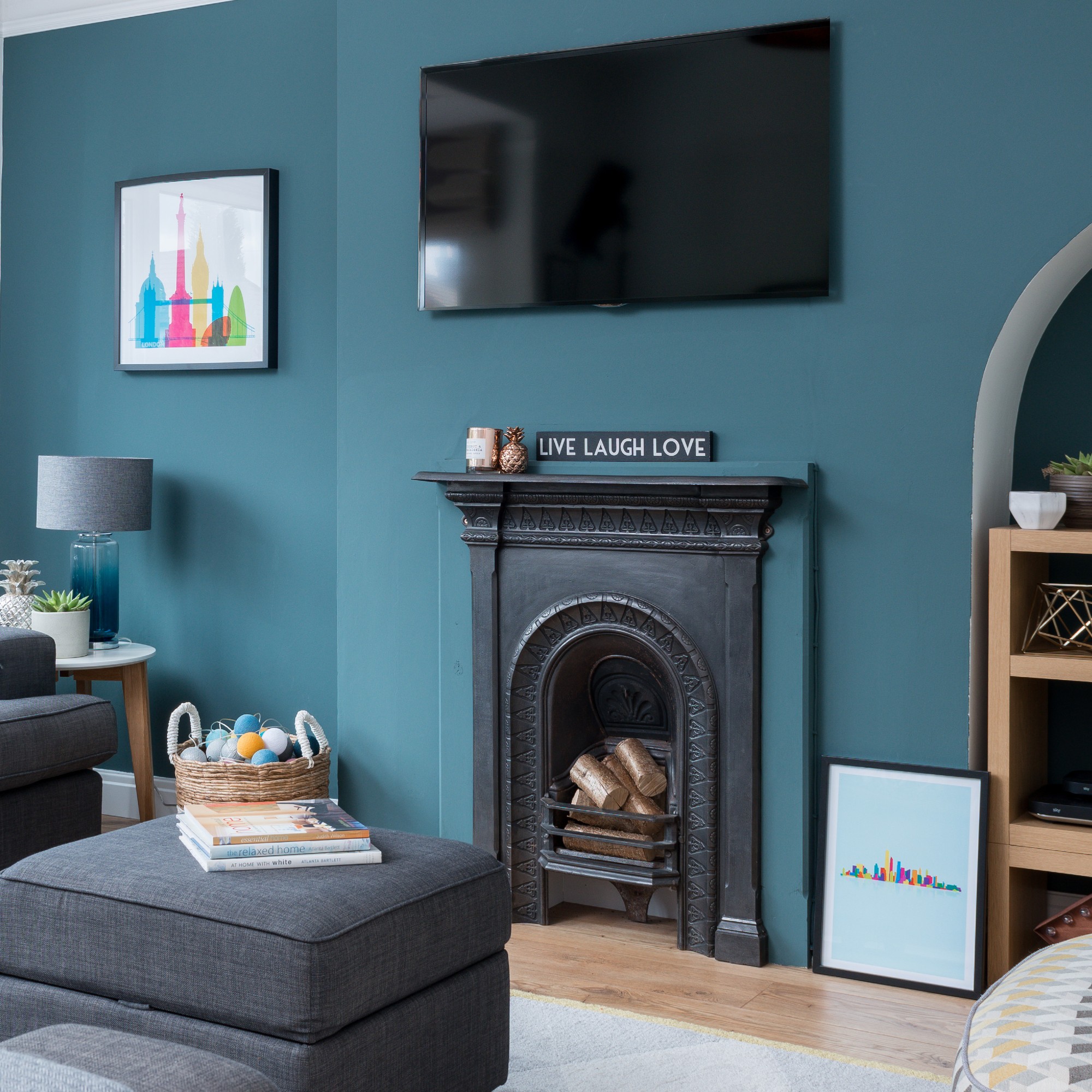
'The positioning of a TV is important not only to ensure an optimal, healthy viewing experience for your eyes and posture but also to ensure it fits aesthetically in the designated space,' explains Zeena Hill, Marketing Director of TV/AV at Samsung UK.
'When it comes to height, positioning the TV at eye level is best to minimise strain on your neck and eyes. Keep in mind that most of the time you will be in a seated position when watching TV.'
'In addition to height, it’s important to consider the size of your TV and the distance from the seating area. The most immersive viewing experience occurs when 40 degrees of your field of view is taken up by the screen.'
Get the Ideal Home Newsletter
Sign up to our newsletter for style and decor inspiration, house makeovers, project advice and more.
'This field of view distance can be easily calculated if you know the size of the TV you are purchasing. To calculate the suitable distance, multiply the TV screen size by 1.2. For a 75 inch TV for example, you would need to sit 2.3M away.'
James Thomas, Senior Product Manager for Home Entertainment at LG Electronics UK agrees, adding, 'Ideally, you want your TV positioned so the centre of the screen is at eye level when you're seated. This helps make for a more comfortable viewing experience.'
'A good rule of thumb is to sit a distance from the TV that's about 1.5 to 2.5 times its diagonal screen size. Naturally, a larger TV needs a bit more space,' he explains.
2. Consider the space before you start
No matter what size of space you have, whether you are looking for small living room tv ideas, or ideas for larger spaces, you need to consider your space before deciding where to put a TV in a living room.
'One of the biggest mistakes when deciding where to put a TV in a living room is not considering the space you’re working with', comments Kellie Wyles, Head of Upholstery at DFS.

'Every home is different and there are many factors to weigh up – from the room layout, your sofa style, shape and position, how big the TV is, and even how much wall space you have to work with. Always test out your plan before putting it into action and don’t forget to consider the position of windows that might create glare and affect your daytime viewing,' she explains.
Zeena says, 'Every living room is different and therefore it’s important to consider multiple factors - what TV you have or are buying, whether you want it wall mounted, on an elegant stand or displays art when in standby to enhance the room’s design.'
'You also need to consider living room layout rules - If your space is open plan, can the TV be seen from the sofa as well as the dining table? Will you be watching it from stools in the kitchen? If so, then it needs to be mounted high enough to be for comfortable viewing from those various heights.'
3. Make sure to hide the cables and wires
Next on the list of the biggest mistakes when deciding where to put a TV is neglecting to hide the cables needed to power it. A jumble of wires hanging down from your TV can look cluttered, especially in a small living room, so be sure to do your best to hide them.
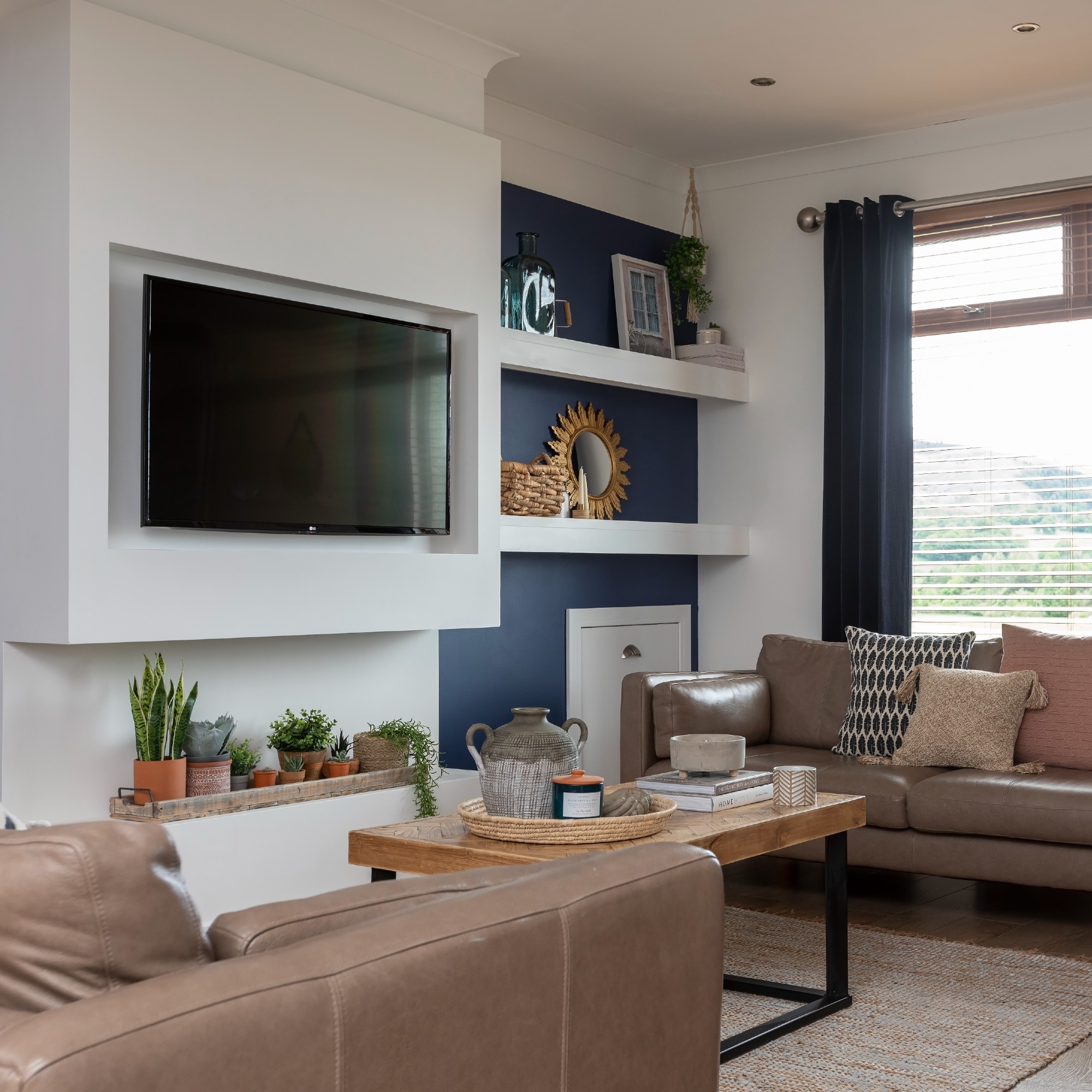
James says, 'One of my top tips for TV placement is seamless integration with your décor. Nobody wants a mess of cables cluttering their living room! Smart cable management solutions can work wonders to disguise unsightly cables. The LG OLED evo G5’s One Wall Design combines a unique wall mount bracket and recess in the TV’s chassis to create a zero gap design – perfectly flush to the wall.'
Zeena adds, 'Several of Samsungs models come with a Connect Box that enables you to move all the cables and wires for your various connections away from the TV itself to reduce clutter and for a cleaner, more visually appealing wall mount.'
4. Forgetting a TV can become part of a gallery wall
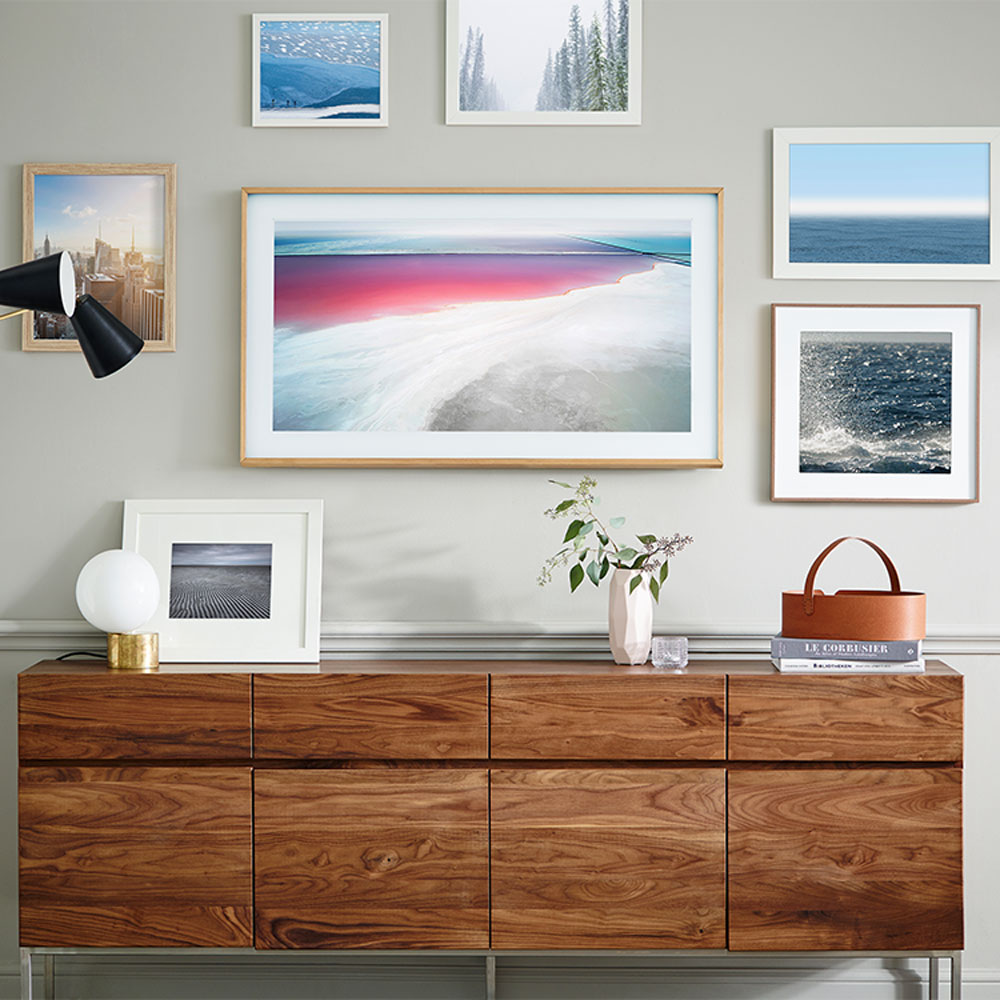
'TV’s are the bane of an interior stylist’s life,' comments Alison Davidson, Interiors and Lifestyle Editor & Stylist at Alison Adding Style. 'They're a big black square that draws your eye, spoiling the aesthetic of a stylish living room, but they are essential to modern life, so we have to find a way to make them work in the space.'
'If you have the budget, a Frame TV from Samsung has a selection of artworks that can be displayed on the screen, as does the CanvasTV from Hisense, so you could have a piece of art creating a stunning focal point when you aren’t watching your favourite programme, or build on it to create a gallery wall.'
Zeena adds, 'Certain Samsung TV models such as The Frame can transform your living space blending seamlessly into any décor with it’s slim, sleek profile and ability to display art when not in use.'
Even if you don't opt for a TV that can display art, you could still incorporate your TV into a gallery wall, or try and disguise it in other ways.
Maxine Brady, Interior Stylist and co-host of How to Home podcast comments, 'If you’re feeling creative, there are lots of cool ways to hide the TV when you're not watching movies —like mounting it on a swinging arm (so you can tuck it out of the way when you don’t need it), or integrating it into some shelves, within a gallery wall or in built-in cabinetry. You can even hide it behind artwork so it blends in seamlessly. It’s all about making it fit with the flow of the room.'
5. Not considering the seating
'Where you place a TV in your living room can have a big impact on everything from your viewing comfort to the overall ambiance of your space so it’s important to get it right,' explains Kellie.
'While personal preferences vary and the layout is somewhat dictated by the style of the house and size of the room, some rules remain universal. At DFS we recently conducted a study that revealed the optimal distance between your sofa and the screen for the best viewing experience is about four meters.'
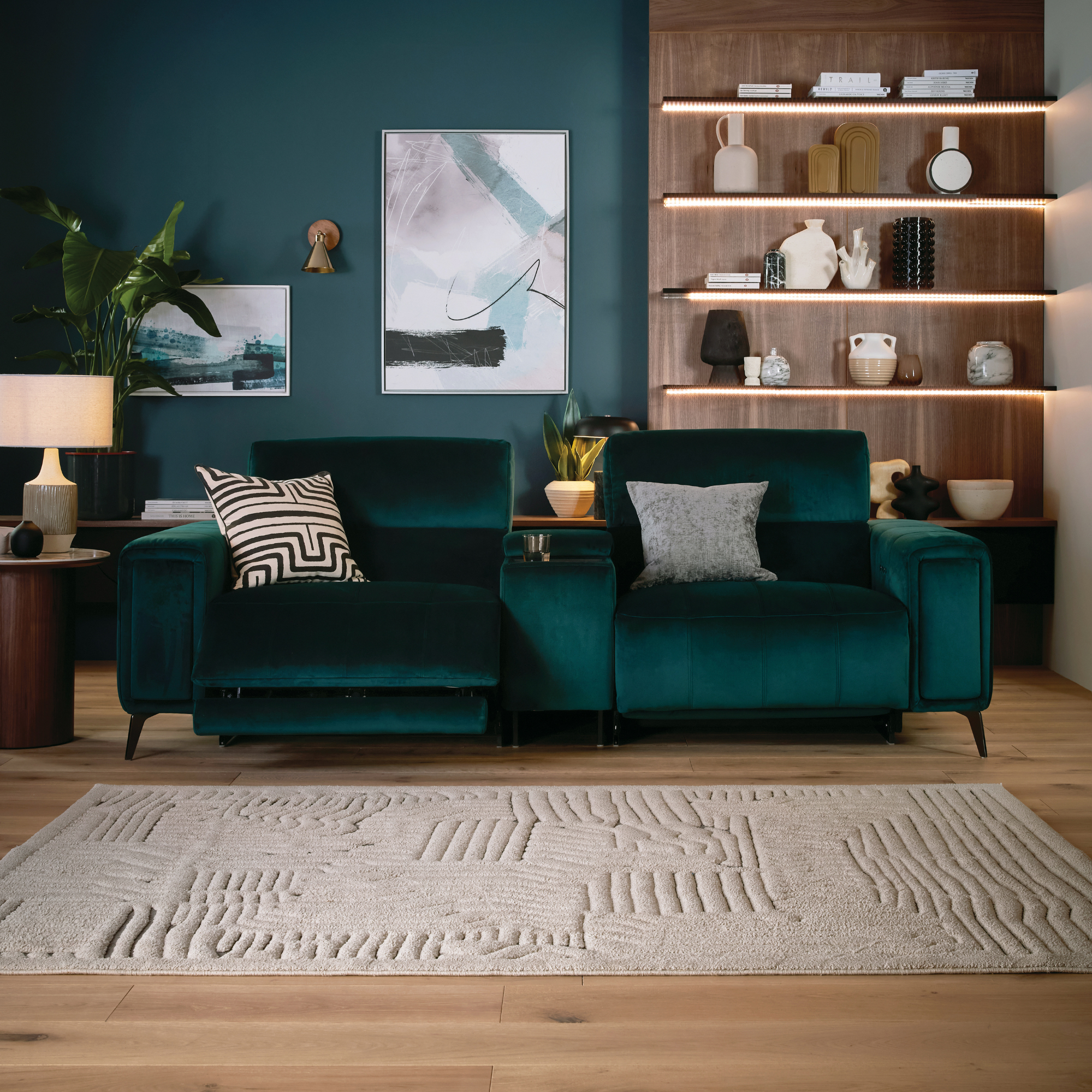
'But before you start rearranging your living room, think about how many people will regularly watch TV and where they’ll sit. Ensure there’s enough seating with clear sightlines to the screen and test different angles to guarantee everyone has a prime view..'
Alison adds, 'think about where your best sofa is and use that as a starting point. It needs to be in a place and at a height that is easy for everyone to see, usually on a wall, or if that isn’t possible, place it in the corner of the room, either on a tv unit or built-in shelving but make sure the TV is at eye-level for comfortable viewing.'
6. Putting a TV in front of a window
'A big no-no, and one of the biggest mistakes when deciding where to put a TV is putting it on a wall right in front of a window,' says Maxine. 'The glare will make it hard to see the screen, and it’s just not a great look overall.'
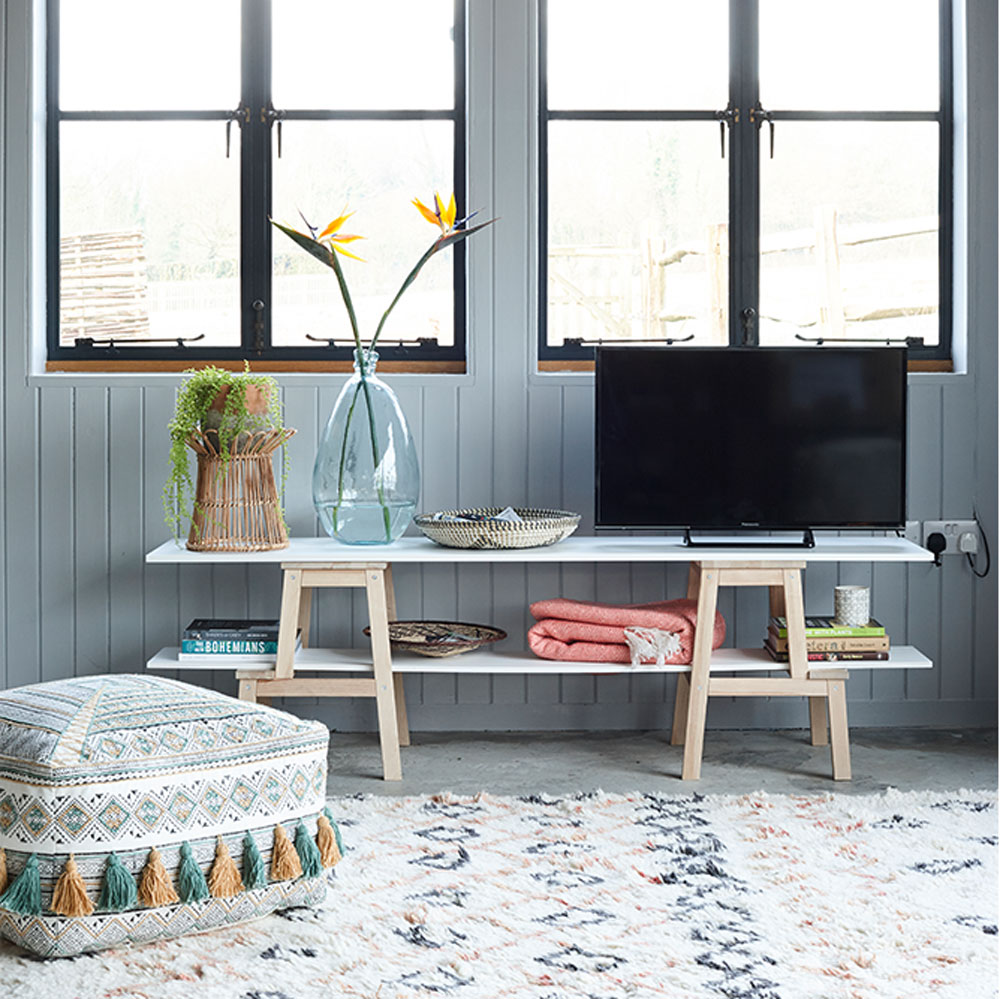
'A TV is already a pretty big visual presence, and putting it in front of a window just makes it even more of a focal point. And it blocks out light and ruins the flow of your space. Plus, putting a TV in front of a window isn't good for your eyesight and the glare from daylight can mess with your viewing experience. It can also make your living room feel like it’s all about the TV, rather than creating a space for people to relax, talk, or hang out.'
'If you don’t have much choice, you could look into smart ways to minimize the glare (like using anti-glare screens). It's all about styling a living room space that looks and feels welcoming, and doesn’t feel like it’s ruled by the TV.'
Alison adds, 'Daylight will cause significant glare on the screen, making it difficult to see the picture clearly, especially during the day. It will also block the natural light making the room darker, and will look less than lovely from outside! And don’t get me started on pulling curtains behind a TV……'
7. Hanging a TV above a fireplace

So this one might cause some debate as the answer should you put a tv above a mantelpiece is not always a straight forward one, but Zeena comments, 'In terms of biggest mistakes when deciding where to put a TV , one is do not place it above a fireplace as heat and soot can damage the TV. If there is no other option then using a heat resistant mantle or installing a recessed wall mount can help protect the TV.'
James adds, 'While aesthetically pleasing to some, placing a TV above a fireplace often results in an uncomfortable viewing angle and potential heat damage to the electronics.'
Try and find another spot for your tv and instead make the most of your mantelpiece and style it like a pro with a host of mantelpiece ideas.
FAQS
What is the correct TV placement?
'There's no single 'correct' placement for a TV in your living room,' says James, 'it truly depends on your individual space and preferences. However, there are some key things to consider for an optimal viewing experience.'
'Wall mounting offers a clean, modern look and can save space, especially if you have a soundbar, which LG highly recommends for enhancing your audio experience.'
'If you prefer more flexibility, a TV unit allows you to easily reposition your TV as needed. Just be sure to choose a piece of furniture that's the right size and height for your TV and compliments your existing interior.'
'Regardless of whether you choose wall mounting or a unit prioritise a comfortable viewing distance and ensure everyone in the room has a great view.'
Nick Bunce, TV expert at AO.com adds, 'When it comes to picking the perfect spot for your TV, it’s advisable to know how to get the most out of your placement. First off, the centre of your TV screen should be at eye level when seated. This crucial element means you’re best off placing your telly roughly 42-48 inches from the floor.'
What walls can you not put a TV on?
Zeena says, 'When wall mounting a TV, it is generally advised to ask an expert to install, to ensure that it is mounted safely and securely. As a guide, a TV can be mounted to brick and non-brick walls (including dry walls) but all TVs differ and have different guides.'
James adds, 'Similar to spacing, it’s important to review your space and consider any factors that could affect your viewing or the TV. Poorly insulated exterior walls can expose your TV to temperature changes and moisture, potentially affecting its performance and lifespan, so one to bear in mind when wall mounting.'
'And when wall-mounting a TV, ensure that the wall is strong enough to take the weight of your TV – for example, if you have a cavity wall, it’s highly advised to screw the wall-mount screws into studs in the wall for better support.'
Alison adds, 'If you intend to hang it on an internal stud wall made from plasterboard, make sure the fixings are strong enough to take the weight, you may need to add special plasterboard fixings for safety. If the TV is above a fireplace, check the wall won’t get too hot as this could cause damage, or place the TV on a bracket so it’s not in direct contact with the wall.'
Have you sussed out where best to place your TV in a living room?

Holly Walsh is a freelance Interiors Writer and Shopping Editor, but worked in-house here at Ideal Home for nearly 10 years. With a background of studies in Interior Design, her career in interior journalism was a no-brainer and her passion for decorating homes is still as strong now 15 years after she started, as it ever was. While Holly has written for most of the home titles at Future, including Livingetc, Country Homes & Interiors, Homes and Gardens, Woman & Home and Style at Home, Ideal Home has always been her ideal home, and she can still be found sharing her expertise and advice across both the printed magazine and the website, while also raising her two young children.
You must confirm your public display name before commenting
Please logout and then login again, you will then be prompted to enter your display name.
-
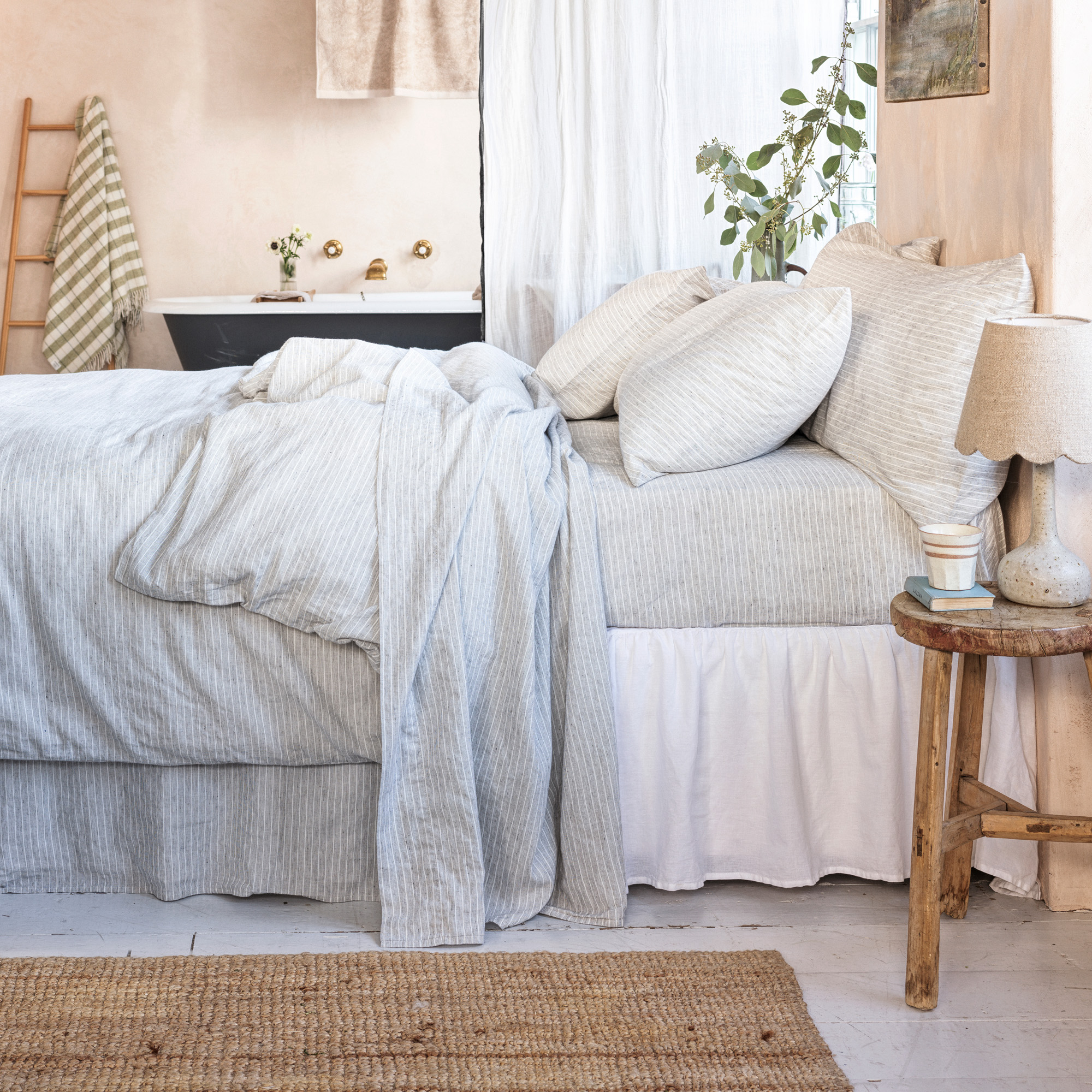 I swore I would never choose a flat sheet over a fitted sheet – but this advice from a bedding expert just changed my mind
I swore I would never choose a flat sheet over a fitted sheet – but this advice from a bedding expert just changed my mindWhy I'm now a 'flat sheet' convert
By Amy Lockwood
-
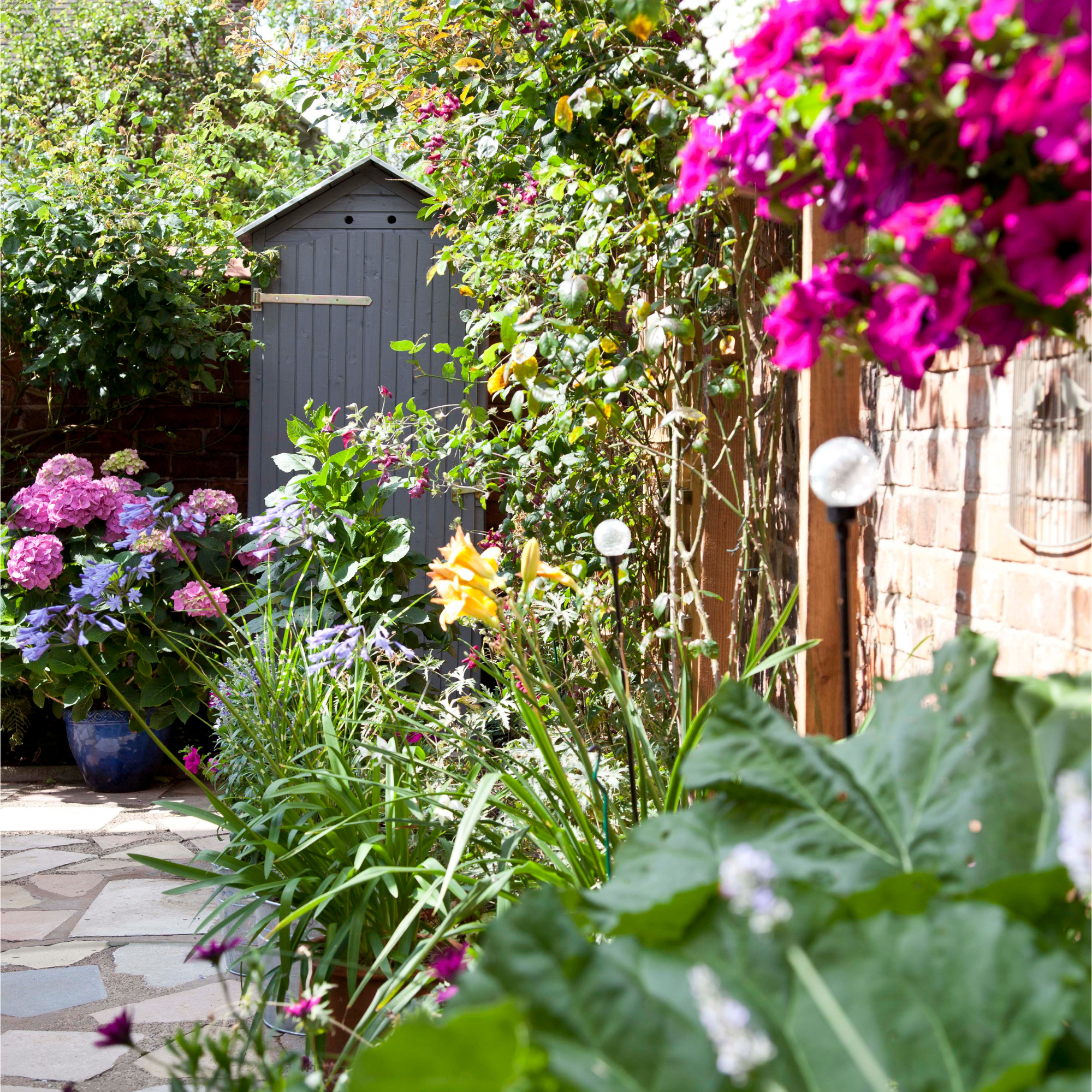 Small garden shed ideas – 5 ways to make the most of this garden building without compromising on space
Small garden shed ideas – 5 ways to make the most of this garden building without compromising on spaceThere's a shed for every garden size – even the tiniest ones!
By Sophie King
-
 My mum introduced me to Nancy Birtwhistle’s ‘Pure Magic’ recipe - now I don’t think I’ll need to buy another cleaning product ever again
My mum introduced me to Nancy Birtwhistle’s ‘Pure Magic’ recipe - now I don’t think I’ll need to buy another cleaning product ever againI live in a hard water area, and it's the ONLY thing that's removed the limescale in my toilet
By Lauren Bradbury